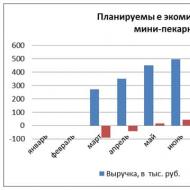
Silhouettes of wintering birds for children. "Wintering Birds" Summary of OD in the senior group. Introduction to the natural world. Listen to the singing of the yellow-headed wren
Winter is still coming and the birds need our help. This is a good time to play with the children and teach them more about birds. Previously there were already materials, and. I have prepared assignments for you on the topic "Wintering Birds" for the development of logic, fine motor skills, the ability to write, read and count, as well as draw and much more! This is a completely ready-made material for conducting a lesson on this topic with methodological recommendations for each type of task. I bring to your attention tasks for children from 1.5 to 6 years old on the topic "Wintering Birds" Types of tasks for a thematic lesson:
- Lay out the letters S, D, G, V and birds with pebbles
- Quantity cards for games with clothespins
- Memory cards for the development of logic and memory
- Game "Find the bird from the fragment."
- Cards for playing with clothespins - find the same one
- Fold the halves for kids
- Solve puzzles for older children
- Labyrinth "Bird Tracks"
- Trace according to the pattern given at the beginning of the page.
- Sort birds by size and type
- Arrange the birds by size
- Bird structure - learning to read
- Puzzles with numbers from 1 to 5, from 1 to 10, from 11 to 20.
- Write down the words - the names of all wintering birds
- Color the birds in the indicated colors
- Wires
- Connect in order from 1 to 10 and from 11 to 20
- Connectors
- Find the superfluous - develop logic
- Walk the lines
- Math puzzles
- Connect by numbers from 1 to 45
- Draw a woodpecker in cells
- Find five differences
- Read and match the picture and description
- Write the alphabet
- Learning to write letters
- I'm learning to write words
- Write the numbers
- Count the examples
- We collect and count
- Fill in the missing numbers
- Complete the sentences
- Continue logical series
- Math maze up to 20
- Follow the tracks with your fingers
- Walk your finger over the bird
- Game "Wintering Birds"
- Connect the syllables - read and remember
- Cut out a feather
- Fill in what's missing
- Creative tasks
- Description of the bird according to plan
- Physical exercises “Tit”, “Sparrows”
- Finger gymnastics “The birds flew up to the house”
- Pure talk
- List of recommended books to read
P.S. This article is copyrighted and is entirely intended exclusively for private use; publication and use of it on other sites or forums is possible only with my written consent. Use for commercial purposes is strictly prohibited. All rights reserved.
I really want to appeal to everyone who loves to analyze my tasks into pictures and post them on various social networks and on their websites. Let's respect each other's work! I make every picture and task specially HERSELF! I spend a lot of time and effort on this! If I offer you these materials for free , that is NOT means that you have the right to post them under your own name and in other formats! If you want to talk about them, then use mine take a picture and do it active link to this page of the site. Due to the current circumstances, I would like to warn you that if I still find my materials in disassembled form on the Internet, then I will make all thematic classes PAID.
I apologize for the mistake, I corrected it and re-uploaded “The Structure of Birds”. But you can fix it yourself by covering up these letters)))
Introduction
We are committed to respecting the personal information of visitors to our site. This Privacy Policy explains some of the measures we take to protect your privacy.
Confidentiality of personal information
“Personal Information” means any information that can be used to identify an individual, such as name or email address.
Use of private information.
Personally identifiable information collected through our site is used by us, among other things, for the purposes of registering users, maintaining and improving our site, tracking policies and site usage statistics, and for purposes authorized by you.
Disclosure of private information.
We employ other companies or are affiliated with companies that provide services on our behalf, such as processing and delivering information, posting information on this site, delivering content and services provided by this site, and performing statistical analysis. To enable these companies to provide these services, we may share personal information with them, but they will only be permitted to receive the personal information they need to provide the services. They are required to keep this information confidential and are prohibited from using it for other purposes.
We may use or disclose your personal information for other reasons, including if we believe it is necessary to comply with the law or court orders, to protect our rights or property, or to protect the personal safety of users of our site or members of the general public. , to investigate or take action regarding illegal or suspected illegal activity, in connection with a corporate transaction such as a divestiture, merger, consolidation, sale of assets or in the unlikely event of bankruptcy, or for other purposes consistent with your consent.
We will not sell, rent or lease our user lists with email addresses to third parties.
Access to personal information.
If, after providing information to this site, you decide that you do not want your personal information to be used for any purpose, please contact us at the following address: [email protected].
Our Practices Regarding Non-Personal Information.
We may collect non-personal information about your visit to the site, including the pages you view, the links you click, and other activities in connection with your use of our site. In addition, we may collect certain standard information that your browser sends to any website you visit, such as your IP address, browser type and language, time spent on the site, and the address of the website in question.
Using bookmarks (cookies).
A cookie is a small text file placed on your hard drive by our server. Cookies contain information that can later be read by us. No data collected by us in this way can be used to identify a visitor to the site. Cookies cannot be used to run programs or infect your computer with viruses. We use cookies to monitor the use of our site, collect non-personal information about our users, store your preferences and other information on your computer in order to save you time by eliminating the need to repeatedly enter the same information, and to displaying your personalized content on your subsequent visits to our site. This information is also used for statistical studies aimed at adjusting content according to user preferences.
Aggregated information.
We may combine in a non-identifiable format the personal information you provide and the personal information provided by other users, thereby creating aggregate data. We plan to analyze aggregated data primarily for the purpose of tracking group trends. We do not link aggregated user data to personally identifiable information, so aggregated data cannot be used to contact or identify you. Instead of using actual names, we will use usernames during aggregate data creation and analysis. For statistical purposes and to track group trends, anonymous, aggregated data may be provided to other companies with whom we interact.
Changes to this Privacy Statement.
We reserve the right to make changes or additions to this Privacy Policy, in part or in full, from time to time. We encourage you to periodically review our Privacy Policy to stay informed about how we protect your personal information. The most current version of the Privacy Policy can be viewed by clicking on the "Privacy Policy" hypertext link located at the bottom of the home page of this site. In many cases, when we make changes to the Privacy Policy, we will also change the date at the beginning of the Privacy Policy, but we may not provide you with other notice of changes. However, if there are material changes, we will notify you either by prominently posting a prior notice of such changes or by directly sending you a notification via email. Your continued use of and access to this site constitutes your acceptance of such changes.
Contact us. If you have any questions or concerns about our privacy statement, please contact us at the following address: [email protected].
With the onset of cold weather, you can often see flocks of birds in the sky. These are the birds leaving our lands, flying to warmer climes. However, some bird species remain. There are strange species that fly to central Russia for the winter. And there are some absolutely amazing ones that give birth to offspring precisely in the cold. This is truly true heroism!
Wintering birds of Russia: classification, list
Feed saves birds from the cold. About wintering birds They say: “Only well-fed birds are not afraid of low temperatures.” Therefore, the birds remaining for the winter must find food for themselves among the snow.
This can be plant seeds, berries, small animals, carrion, food waste in city garbage dumps. Insectivorous bird species migrate to the southern regions in winter. About seventy species of birds remain to spend the winter in Russia.
Group of wintering birds by territorial basis includes several types:
- urban;
- field;
- forest.
According to the method of nutrition, they are also divided into:
- predatory;
- herbivores;
- omnivores.

Transfer names of wintering birds completely almost impossible. One can only imagine a list of the most common and well-known species.
- bullfinch;
- sparrow;
- crossbill;
- nuthatch;
- yellow-headed kinglet;
- waxwing;
- nutcracker;
- lentils;
- goldfinch;
- Moscow;
- tit;
- jay;
- tap dancing;
- woodpecker;
- magpie;
- pigeon;
- crow;
- jackdaw;
- grosbeak;
- pika;
- grouse;
- black grouse;
- partridge;
- owl;
- white owl;
- tawny owl
Bullfinches
These are beautiful wintering birds finch families are considered sedentary. They live in coniferous and mixed forests, since their main food is seeds of spruce, pine, berries, mainly rowan, and tree buds. In summer it is difficult to see them.
But in winter, bullfinches appear where they can profit from food. In cities and villages, you can often see 5-6 of these red-breasted beauties on rowan trees. These bullfinches flew in to feed.
The birds are slightly larger in size than a sparrow, but their coloring is amazing. Poets in poetry call these birds red apples. Indeed, their bright scarlet or ash-pink breasts look amazing against the backdrop of snow-covered branches.
It is quite possible to catch and tame. These birds get along well in their cages and even begin to whistle simple tunes to their owner.
Listen to the singing of the common bullfinch
But bullfinches really love to eat - they never refuse food. Indulging the bird's gluttony, the owner often feeds the pet, which is harmful to its health.
Bullfinches cannot stand severe frosts below -50 degrees. Therefore, those who live in the northern part of the taiga forests still migrate during the winter. But their path does not always lie in southern countries.
Many simply move a little further south, remaining in the territory. That’s why they joke that the bullfinch flies to Russia for the winter to bask.


The female bullfinch is painted in gray tones and does not have such a bright breast
Sparrows
Residents of central Russia are so familiar with both summer and winter that it’s even strange to imagine if they suddenly disappear. According to statistics, the number of these birds in the world reaches a billion. Just for fun, someone has calculated that there is one sparrow for every 8 people. These birds belong to the urban species of wintering birds.
An interesting historical fact associated with them. Since these birds feed on grains, posing a serious threat to grain growers. Because of this, the PRC began to fight against “field pests.” Ornithologists have found that sparrows cannot fly for more than a quarter of an hour. By preventing sparrows from landing and frightening them, people have killed more than two million birds.
However, they did not take into account that these birds, in addition to grain, destroy harmful insects. Having gotten rid of one enemy, the Koreans made themselves another, more malicious one. So the unlucky fighters had to bring sparrows into the country.
The second interesting fact concerns their structure. Surprisingly, there are twice as many vertebrae in the neck of sparrows as in... a giraffe! But why aren't their necks so long? It turns out that the vertebral fragments of sparrows, unlike giraffes, are flat.
And the third fact will give odds to many representatives of the human race. Sparrows, as it turns out, are monogamous birds. Having once chosen a partner, they remain faithful to him all their lives. In a sparrow family, a couple can get another “spouse” or “wife” only if the previous one dies.


Crossbills
This representative of the finch family of the passerine order stands out among all the others. Talking about what birds winter in Russia, and mentioning crossbills, it should be noted that they even breed and feed their offspring in thirty-degree cold!
And at the same time, these small birds are called “singing in the snow.” True, crossbills can nest not only in winter, but also in summer. In order for the female to sit on the eggs, all that is important is the fact that there is sufficient food around.
The body of an adult is no more than 20 cm in length, the individual weighs about 50 grams. By the age of three, females have gray-green plumage with yellowish tint, while males are usually red-brown.
Crossbills feed on cone seeds. Birds get food using their curved beak. Based on their feeding preferences, they are divided into spruce crossbill and pine crossbill. They are also classified according to external characteristics.
It is impossible to find crossbills in populated areas. This is an absolutely forest dweller.


Female crossbills are also not as bright as males
Nuthatches
The second name for this small bird is coachman. It belongs to the nuthatch family, widely found in coniferous, deciduous and mixed forests of central Russia and Siberia. The nuthatch also nests in parks and gardens of populated areas. Therefore, nuthatches can be classified as both forest and urban types of birds wintering in Russia.
The birds were named nuthatches for their amazing ability to climb tree trunks, clinging tightly with their claws. Moreover, these birds often move in a vertical direction with their heads down.
The nuthatch is called the driver for its ability to make sounds similar to the clicking of its tongue. Similar sounds are produced when a person controls a horse. But these are not their only “songs”. The nuthatch's repertoire is much wider. This noisy bird sings especially actively during nesting: in late winter and early autumn.
They breed their offspring in hollows, occupying old woodpecker dwellings for this, or they find natural hollows that have not yet been occupied by anyone - they themselves are not able to hollow out an “apartment” for themselves. Nuthatches do not disdain artificial nests.
The coachman feeds on both plant and animal foods. A caring bird constantly makes supplies for a “rainy day”, hiding excess food in tree crevices and disguising the “cache” with lichen or bark.


The bird got its name for its ability to deftly climb trees, even upside down.
Siskins
And also what birds stay for the winter in central Russia? Of course, siskins! This is another representative of the finch family of the passerine order. This is a resident of coniferous forests. The siskin feeds on insects and seeds, depending on the season.
Pairs are created only for the period of nesting. With the onset of autumn at the end of September, siskins gather in flocks and migrate to places where there are ice-free reservoirs. Therefore, siskins are classified as birds that partially winter in Russia.
A well-known song is dedicated to the little siskin. After all, this small bird is distinguished by its gullibility and sociability. She easily falls into all sorts of traps, quickly gets used to captivity, becomes completely tame and even produces offspring in captivity. She feeds in a cage on canary seed, rapeseed, and flax seeds.
With enough patience, a person can teach a pet siskin a variety of tricks and tricks. Therefore, at bird markets, this bird is constantly a success among those who want to get a feathered pet.

Yellow-headed kinglets
This is another songbird from coniferous forests that does not migrate with the onset of winter and, like the nuthatch, can move upside down along a trunk. The bird has a crest on its head, for which it got its name. And they would have dubbed him a king, but the bird was not the right size. This seven-gram forest singer is slightly larger than a dragonfly. Yes, he is a master at hiding from prying eyes.
The kinglet is difficult to see among the foliage, but can be easily heard. It is difficult to confuse the wonderful song of the forest soloist with others, his trills and modulations are so individual. Moreover, unlike other birds that “voice” the nesting period, the wren sings at any time of the year.
Listen to the singing of the yellow-headed wren
The bird's nest is built in the form of a flattened ball of blades of grass, fluff, moss, and lichen, holding everything together with cobwebs. Then the future parents hang their house higher in the dense foliage of the tree. The inside of the nest is quite crowded; the chicks sit huddled close to each other.
Getting a kingling as a pet is a difficult matter. He is very careful in the wild, but in captivity he is picky about his contents. Often, once in the cage, the wren refuses food and dies from hunger.


The bird is small in size, so it is difficult to notice in the forest, but it is easy to hear
Waxwings
This beautiful small bird from the passerine family, measuring about 20 cm and weighing 60 g, can be found in winter Russian forests. There is a crest on the bird's head, the eyes, wings, crop and tail are outlined in black. In addition, red spots are visible on the wings, and there is a yellow line on the tail.
The bird got its name for its iridescent trills, which resemble the sounds: “Sviri-ri-ri-ri.” Anyone who has heard the singing of a waxwing will never confuse it with any other bird.
Waxwings are common in the taiga forests of the northern hemisphere. During wintering they do not sit in one place. They are called nomadic because they are constantly in search of food.


Kedrovki
The second name for this bird of the corvid family is nutcracker. It is slightly smaller than the jackdaw, but has a long beak. He helps the nutcracker get nuts from the cones. Hiding food in the sublingual pouch, the bird carries it to its nest.
One individual can carry up to 100 nuts at a time. And the rest, which the nutcracker noticed, but could not fit into its sublingual pouch, the bird hides in an area of 2-4 km in the winter in snowdrifts, and at other times of the year directly into the ground.
An interesting fact is that in the city of Tomsk there is a monument to the Nut Bird. After all, thanks to her thriftiness, she helps coniferous forests grow. Not all nuts buried in the ground are found, which means that some of the supplies will germinate in the spring.

Goldfinches
The name of this bird from the finch family is consonant with the word “finch”. This is justified, because such a handsome man still needs to be found. The white cheeks contrast beautifully with the black crown of the head. The dapper bird's image is completed by a scarlet mask around its long conical beak.
Goldfinches are not distinguished by their large size, since they grow only up to 17 cm. Their weight does not exceed 20 g. However, the fame of fighters is firmly entrenched in the birds. Brave birds are ready to fight tooth and nail for their territory.
These birds belong to the field species. Food for goldfinches is the seeds of weeds, in particular thistles, burdocks, burdocks, black dropsy and some shrubs. They do not disdain the seeds of cones. With the onset of winter, birds look for food on plants sticking out among the snow.
The goldfinch is a lover of singing. His repertoire includes up to 20 types of different trills. This is why they love to keep him in homes as a pet.
And a goldfinch in a cage, when properly maintained, pleases its owners with cheerful songs all year round. Goldfinches can live up to 20 years in captivity!


Moskovki
The second name of this small bird is the black tit. In appearance it is extremely similar to the common tit, but smaller in size. And her chest is gray.
Due to the black mask around the beak, which turns into a cap, the bird was originally called “masked”. But later they renamed it into a word more convenient for Russian people, which seemed to go back to the main city of the country - Moscow.
Muscovites live in coniferous forests. But with the onset of cold weather, it can be found near feeders in gardens and parks.


The original name of the bird was masked due to its mask-like plumage
tits
This small bird is surprising in that it can destroy almost half a thousand insect larvae and caterpillars in a day. Because of such gluttony, she became the main protector of fields and vegetable gardens. People noticed this and began to protect the tits. In the 17th century, there was even a royal decree according to which anyone who killed a titmouse faced severe punishment.
With the onset of cold weather, tits move closer to human habitation, where they eat up the remains of human food or feast on leftover food in “canteens” specially designed for birds. Schoolchildren are happy to prepare feeders for them.
Interestingly, in modern Russia, tits have also received special attention. November 12th is Sinichkin Day in the country. In some places (unfortunately, not everywhere yet) the authorities even organize public festivities on this occasion.


jays
This bird belongs to the family of corvids in the passerine order. It reaches a length of 34 cm, and its weight is almost 180 g. The name of the bird goes back to the verb “to shine”, because jays are very beautiful. Her plumage is reddish-brown, her wings are spotted with white and blue, and she has a small crest on her head.
The jay's food consists of sunflower seeds, spruce, cereals, and acorns. The bird not only eats oak seeds, but also prepares supplies for itself by burying them in the ground. Thus, it contributes to the spread of oak trees in the area.
The jay is omnivorous. In addition to plant foods, its diet also includes animals: carrion, small rodents, chicks of other birds, eggs. And this is in addition to insects and their larvae. There are cases where a jay attacked adult birds, killed them and ate them.
The feathered one is extremely careful. It is difficult to catch her and even just to see her, she hides so cleverly among the trees. But you can hear it. Although there is a difficulty here: the jay rarely sings its own songs, more often it imitates other people’s voices: a nightingale’s trill, the croaking of a crow, barking dogs and even the creaking of a door.


Shchury
The taiga forests are home to beautiful small birds of the finch family - the shura. Their sizes coincide with the sizes of starlings. For their bright coloring (crimson breasts and backs, gray belly, dark brown wings and tail, white stripes on the shoulders) they are called Finnish roosters or Finnish parrots.
True, female gar have very modest plumage colors: instead of crimson, their predominant color is dirty yellow. Shchers have beautifully cut tails. Sometimes the shura is confused with the bullfinch - both are red-breasted and love to feast on rowan berries.
The interesting thing is that pike-mouths simply love to swim; it doesn’t matter to them what time of year it is. Even in winter, these amazing birds find ice-free bodies of water and have fun splashing around in them. In captivity, these birds get along well, but reproduce offspring extremely rarely.


Woodpeckers
This representative of the woodpecker family usually lives in forests. But it can often be found in rural areas near populated areas. They are also not rare guests in city gardens and parks, and in cemeteries.
They are known for using their hard beak to hollow out holes in trees, extracting a variety of insect pests from under the bark. In this way they provide an invaluable service to plants. And other birds and animals benefit from this activity: for the majority, there remain convenient places for living and breeding.
In autumn and winter, the woodpecker switches to plant foods. It finds and eats coniferous seeds, nuts, and stone fruits.
The woodpecker reaches 27 cm in length. Its weight can be up to 100 g. The plumage of the woodpecker is black and white with pink or red undertail. The bird's head is decorated with a bright red cap.
The bird flies beautifully. But more often she can be seen climbing a tree trunk. The woodpecker is a noisy bird. The sounds it makes cannot be called a song. Rather, the vocal performance of an excited woodpecker sounds like a chirping sound.
Listen to the woodpecker's knock


Pigeons
These birds symbolize peace and harmony among people. Probably, this was the custom because of their loyalty to their mates and their native place. Like swans, doves do not cheat on each other, remaining faithful throughout their lives.
People began to use this feature of always returning to the place where they were born in order to send messages over considerable distances. Carrier pigeons have been around for quite some time. Until now, ornithologists cannot come to one answer to the question of how they find their way back: by the stars or thanks to magnetic fields.
Pigeons are omnivores. Most often they live in cities, finding food in garbage dumps or feeders. People love this bird and feed it at any time of the year. Many people breed pigeons, creating special breeds. There are even exhibitions of this beautiful bird, where the brightest representatives of the breed are given medals and prizes.


Pigeons are habitual inhabitants of winter
Magpies
The nickname “thief” has firmly stuck to the magpie. Her craving for everything shiny and bright is truly omnipotent. People often found expensive gold jewelry, watches, and silver cutlery in their nests along with metal lids and beads. How the birds managed to steal this from their owners is a secret known only to themselves.
- birds are the smartest. Ornithologists have proven that she is smarter than other birds, since only white-sided birds are able to recognize themselves in the mirror. They do not see another bird in the reflection, attacking or frightening it, and do not worry.
If a magpie grows up with a person, then it recognizes its owner not only by his voice, but also by his gait and figure. These are faithful birds: they bring their trophies (sometimes stolen) to their owners and share food. Many funny stories about this are told by those who had to deal with “gifts” from a feathered pet.
Magpies in captivity live long, are easily tamed, and can be trained. Their behavior is sometimes puzzling. In his free time, for example, a well-fed bird can amuse itself by riding along the roof slope on a metal can lid. Moreover, having rolled down, the magpie picks up its “sled” with its beak and drags it up, just like kids do on a hill.
There are legends that Metropolitan Alexei in the 19th century suspected a human element in these birds. He decided that magpies were witches in the form of birds. Therefore, the magpies were forbidden to approach Moscow.
Some representatives of this species are able to imitate sounds made by humans. Although this doesn't happen often.


Crows
A large bird of the corvid family often lives in cities and villages. She is an omnivore, feeding on waste from the human table. Garbage dumps are their favorite habitat. In villages, crows steal chickens, goslings, ducklings, and eggs from villagers, thereby causing harm. There are known cases when kittens and puppies fell into their claws.
Like magpies, crows are extremely intelligent. Their intelligence has been compared to the development of a five-year-old child. People, noticing the loyalty of crows, sometimes use it to their advantage. If you put crow eggs in an incubator where chickens are hatched and then raise the offspring, you won't find a better yard keeper.
Crows will not allow any creature into the territory; they will bravely defend the living creatures of their owner. But this won’t stop them from enjoying chickens from someone else’s backyard.
The crow is called the Russian parrot. Adopting human speech and copying the sounds of other pets is not difficult for them. In captivity, crows live more than 20 years.

Eagle owls
This bird wintering in Russia is listed in the Red Book. She easily endures Russian winters, feeding on small animals: martens, hares, mice, squirrels, rats. The predator swallows small food whole.
Sometimes eagle owls hunt quite large animals: roe deer, wild boar. Then they tear the victim into pieces that can fit down the throat. They hunt at night and prefer to sleep during the daytime.

Owls
Like the eagle owl, the owl is a nocturnal predator. Having lush, loose plumage, it easily tolerates frost. Fast, silent flight and sharp vision help it find its prey. In the weakest light, the bird sees the prey located 300 m from it.
The bird is large, up to 70 centimeters in length. The bird gains 3 kilograms of mass.

Wintering birds also include black grouse, hazel grouse, and partridges. They warm themselves by burying themselves in snowdrifts. Under the snow, the birds look for food - last year's grains and herbs.

In severe frosts, birds try to avoid flying. The body area increasing when the wings are open leads to greater heat loss. The bird risks freezing instead of catching prey or getting to places with better weather.
Irina Permyakova
Thematic cards “Wintering birds” for children 6–7 years old
Thematic cards on the topic “Wintering birds”
for children 6-7 years old.
THEMATIC SET OF CARDS – BASIS FOR COOPERATION
The thematic kit creates the basis for cooperation: if each child makes some part, then everyone together will get a common product that reveals (illustrates) the topic from all sides - in images, in words, in symbols, in numbers.
I offer a set of cards with its content, but children can imagine another type of task.
P. To clarify children’s understanding of wintering birds, their appearance, nutrition, characteristics of life in winter conditions, to cultivate the ability to observe the world around them, and love for their native nature.
Continue to increase your attention span.
Improve computational skills, counting backwards.
Continue to learn to identify patterns, find an extra figure.
Practice finding birds in a plotless drawing.
R. Learn to describe the external structure of a bird.
H.E. Prepare your hand for writing using shading. Develop coherence in the eye and hand system. Cultivate artistic taste.
Goal setting:
Encourage children to voice their individual goals
Card No. 1
Task: Color the birds, count and write down.
Circle the words with dots.
Card No. 2
Assignment: Color what the birds eat and draw a path to the feeder.
Card No. 3
Assignment: Circle the dots and write. Find and count the birds in the plotless drawing. Find a couple of birds. Color the body parts with different colors.
Card No. 4
Task: find the differences, count them and circle the corresponding number. "An extra picture." Hatching letters.
Birds starting with a given letter. "Find the shadow." “Draw a path from small to large.”
Publications on the topic:
Summary of educational activities for children of the older group 5–6 years old “Wintering birds”“Wintering Birds” Direct educational activity for children of the older group (5-6 years old) Goal: to develop dialogical and explanatory.
Dear colleagues, I present to your attention the didactic poster “Wintering Birds”. I made this poster on white Whatman paper (.
Card index of didactic games for children 3–4 years old on the topics “Utensils”, “Transport”, “Wintering birds”, “Poultry” Theme: "Dishes". “Let’s set the table for tea.” Program content. 1. Activation of the dictionary. Introduce the names of utensils into the children's dictionary and teach them.
Summary of educational activities in a multi-age group of a kindergarten with children from 3 to 7 years old “Wintering birds” MKDOU Klevantsovsky kindergarten Ostrovsky district, Kostroma region Summary of educational activities in a mixed-age group of a kindergarten with children.
Summary of the lesson on FEMP “Wintering Birds” for preschool children from 5 to 6 years old Program objectives: Educational: to form an idea of equality: determine equal numbers in groups, continue to teach correlation.
Summary of educational activities on the formation of a holistic picture of the world for children 4–5 years old “Migratory and wintering birds” Belkova Irina Pavlovna, teacher of the MBDOU “Child Development Center - kindergarten with. Bakchara" Objectives of the lesson: to deepen and expand knowledge.
Lesson on the development of lexical and grammatical aspects of speech in children 5–7 years old “Wintering birds” Consultation for parents Name the wintering birds that you know: What other wintering birds do you know? In winter, our people are cold and hungry.
Games, riddles, physical exercises for classes during the week “Wintering Birds. Birds of our city" Topic of the week: Wintering birds. Birds of our city. Goal: Formation of knowledge about wintering birds living in our city. Objectives: Development.
The set includes the following games:
1. Trace the birds. This task is great for preparing your hand for writing and developing coordination of movements. You can draw straight from the sheet, or you can make the task reusable: hide the sheet in a file corner and invite your child to trace the outline of the birds with a whiteboard marker. You can always erase such lines and draw again.

2. Match the bird and its shadow. This task develops logic, attention, and coordination of movements. This sheet can also be made reusable and used, for example, for two kids.

3. Find whose wing, crest, beak. This is a task for imaginative thinking and the development of attention in children. Cut out the birds and individual parts of their bodies, take blank sheets of paper and invite the child to glue first the bird, and then the lost part of its body.

4. Template for creativity “Feed the birds grains.” Give your child some yellow paint and ask him to use his finger to paint the grains that the birds will eat.

5. Draw the birds’ tails. Show your child what birds with a tail look like and invite him to complete the tails of tailless birds.

6. Count how many birds there are and circle the corresponding number.

7. More or less. Invite your child to look at the pictures, count the birds and say which of the two pictures has more birds.

8. Maze “Help the bird find its way to the nest.”

9. Choose a palette. Place cards with pictures of birds in front of the child, a little below the palette, and ask him to find the colors in which each of the birds is painted.

10. Match the bird and its name. You can also use a corner file to complete this task. Determine the difficulty level of this task for yourself. If your child knows a lot of letters and is trying to read, help him read the words. If your baby doesn't yet know most of the letters, read each word clearly while running your finger over it. And then invite him to connect the birds with their names.

11. Bird find. While walking in the city or outside the city, mark the birds that you meet on this sheet.

12. Help the birds find their homes by leading them along the paths.

13. Cut and glue the birdhouse. To complete this activity, have your child cut out a rectangle, a triangle, and a circle using scissors, and then glue them to make a birdhouse, like in the picture at the top of the page.

14. Match the missing fragment to each of the images. To prepare this task, cut out the fragments in circles, give the child glue and offer to complete each picture by gluing the lost fragments to it.

15. Complete the puzzle. To prepare the puzzle, you need to paste the printed sheet onto cardboard or laminate it, and then cut along the dotted lines. Invite your child to assemble a picture from separate pieces.

16. Place all the birds on the branches. Invite your child to cut out squares with birds and a rectangle with grass, or cut them out together, and then give the child glue so that he glues all the birds to the tree and the grass under the tree.

17. Fold the row from large to small. To prepare the task, glue the printed sheet onto cardboard or laminate it, and then cut out all the birds. Ask your child to find the largest bird and place it in front of him, then find the largest among the remaining ones and place it next to the first, and so on until the correct row is formed. For older children, you can make the task more difficult by simply telling them what needs to be done, but without giving further hints.

18. Find 10 birds in the picture, as well as bees, butterflies and stars. Check the boxes if you found them all. Count the different objects in the picture.

19. Coloring pages with birds. And also on our blog there is

If you liked our Birds activity pack for kids, tell your friends about it on social networks. They might also want to do a themed activity for their kids;)
And in order not to miss the release of our new materials for classes and other useful things, feel free to
We wish you warm weather, good mood and bird trills under the window!















